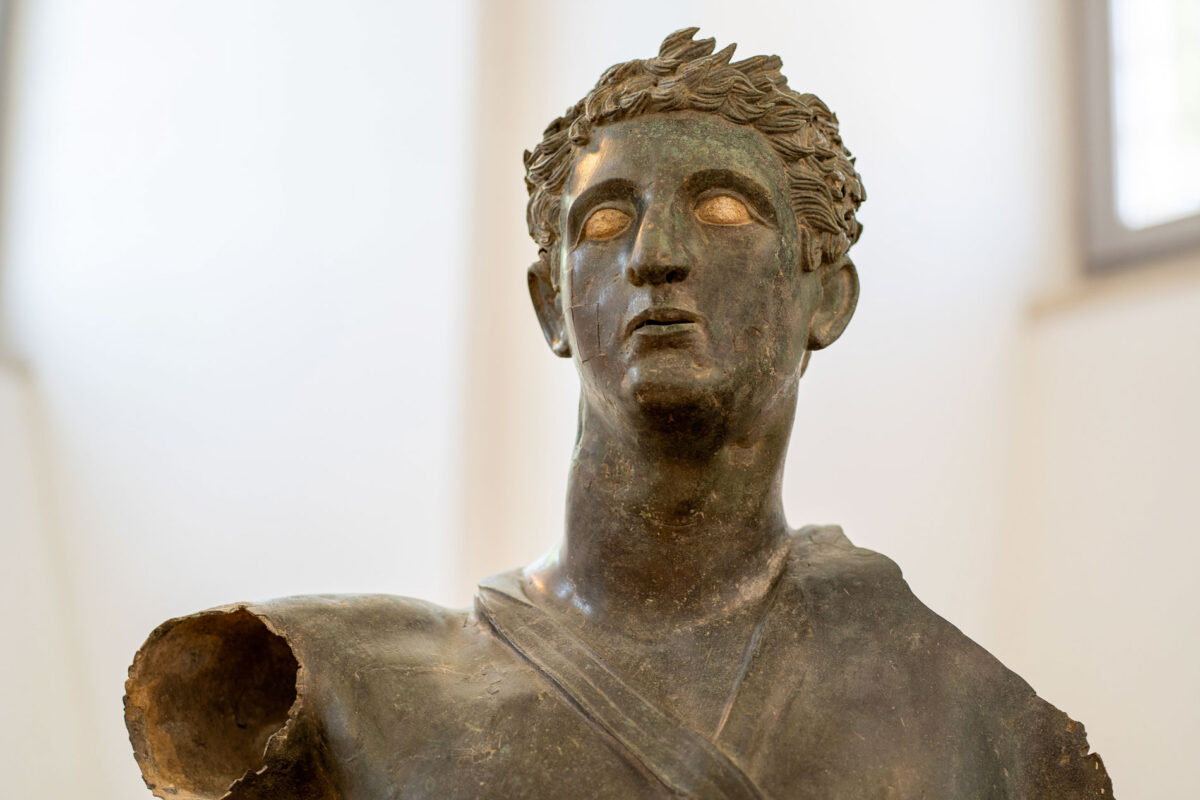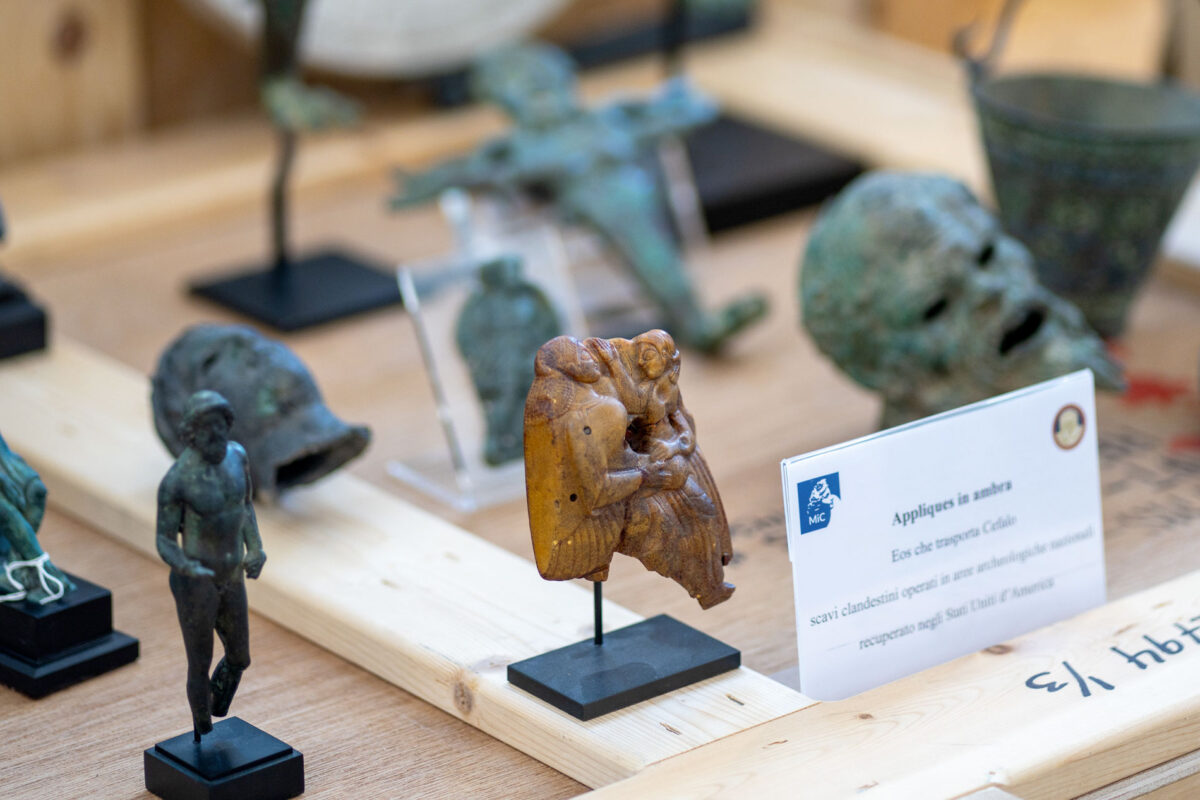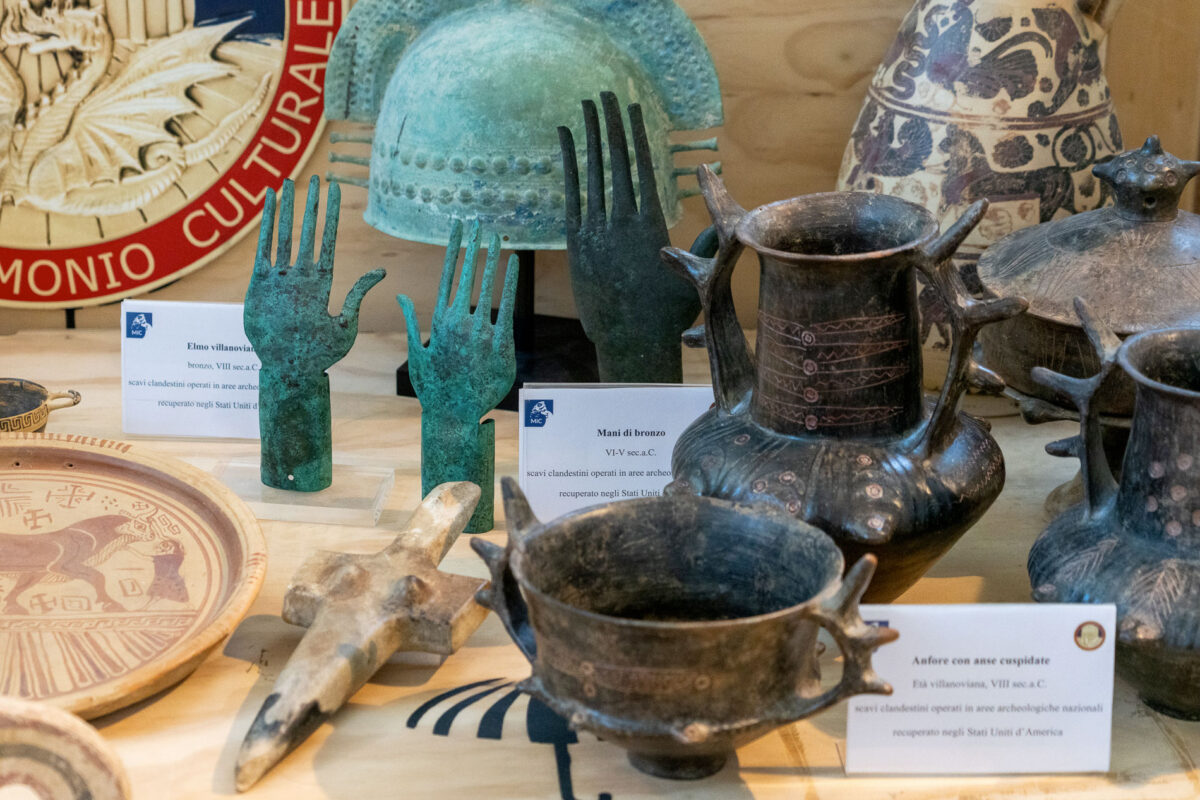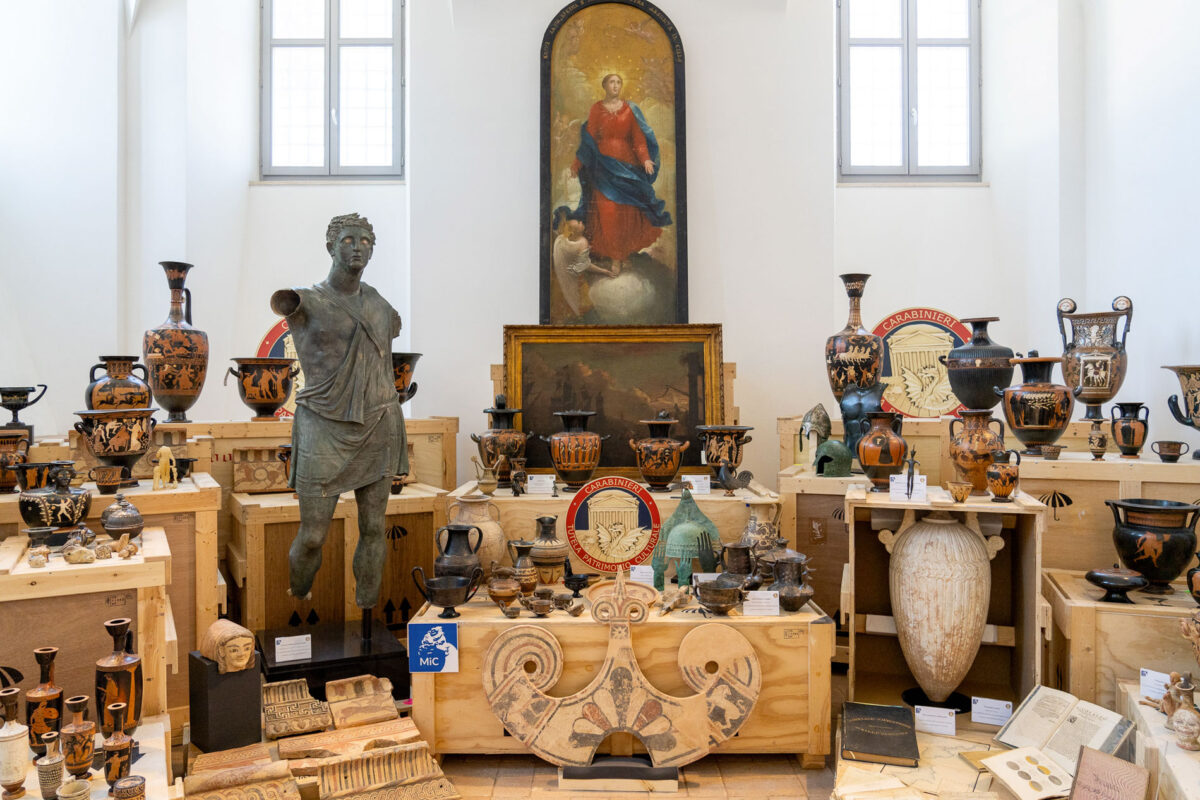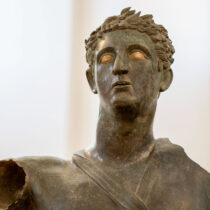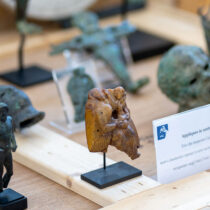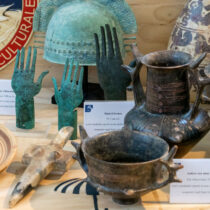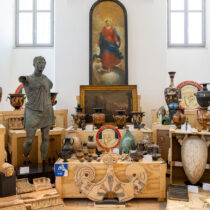Around 600 objects of cultural heritage have been repatriated to Italy from the United States by the Carabinieri Command for the Protection of Cultural Heritage (Carabinieri T.P.C.). The estimated value is €60,000,000. The repatriated artifacts have been presented at the Central Institute for Restoration in Rome.
The group of objects consists mainly of antiquarian objects: archaeological, archival, cultural and archaeological goods dating from the 9th c. BC up to the 2nd c. AD, identified with products of clandestine excavations in Central and Southern Italy, as well as stolen artifacts from churches, museums and private collections.
The objects were repatriated to Italy thanks to numerous investigations conducted by the T.P.C. with several national prosecutors’ offices, assisted by the New York District Attorney’s Office and the U.S. Homeland Security Investigations.
Regarding its investigation activities, the T.P.C. utilises an important technological tool, the “Illicitly Misappropriated Cultural Property Database”, the world’s largest archive of stolen art objects, with information on more than 7 million objects, of which 1,315,00 are to be recovered. An innovative Artificial Intelligence utilizing tool, called the “Stolen Works Of Art Detection System” (S.W.O.A.D.S.), performs a continuous search for stolen works of art through the web and social networks.
According to the latest 2023 activity report, released recently by the T.P.C., 105,474,000 art goods with an estimated value of more than 264 million euros, were recovered.
Among the recovered goods are:
-600 artifacts of archaeological importance either stolen or illegally excavated and exported. The goods were located in the U.S. both at the initiative of the T.P.C., but also as a result of investigations, carried out by the District Attorney’s Office and the HSI, offices that then seized the artifacts found in the possession of well-known U.S. museums, galleries, collectors and sector intermediaries, as well as international traffickers. The goods, which date from the 9th century BC to the 2nd century AD, offer historical and scientific documentation to the Villanovan, Etruscan, Magna-Grecian, Samnite, Apulian, and Roman-Imperial cultures and come from the regions of Latium, Campania, Apulia, Calabria, and Sicily.
-A silver, 4th c. BC tetradrachm of Naxos which was located in 2013 during illegal excavations in Sicily. Shortly after it has been exported illegally in the US. The object was located in New York in 2023 as it went for sale for $500,000.
-A silver coin minted under the name of Emperor Trajan, stolen from the Archaeological Museum of Pesaro in 1978 and located in a private home in Lancaster, Philadelphia, US.
-Gold coins stolen from the Museo Archeologico Nazionale di Parma, in July 3, 2009 and found in private estates in New York, Dallas, Los Angeles, Chicago and Puerto Rico.
-A breastplate and two bronze heads dating from the 4th-3rd centuries BC, located by the District Attorney’s Office in the possession of a well-known New York gallery owner, and seized as found to derive from clandestine excavations in south-central Italy.
-An Umbrian bronze depicting a warrior, found in a well-known U.S. museum, and stolen from an Italian museum in 1962.
-A 1st c. BC bronze sculpture depicting a life-size Hellenistic ruler, the product of clandestine excavations that occurred in the 1970s in southern Italy, located in New Jersey.
-A mosaic floor illegally excavated in Sicily before 1991 and located at the private home of a New York art collector.
-Villanovan vases, Etruscan buccheri and painted slabs, Apulian amphorae and craters, silver cups, marble and bronze heads, complete funerary goods uprooted from their original context by grave robbers.
-Medieval manuscript parchments and archival/bibliographic material from 1800 to 1979, the latter removed in 2004 from the historical archive in the province of Pescara, later identified in the collection of a gallery owner in Binghamton, New York.
Paintings coming from Italian churches and homes, which were stolen and found in the hands of US art enthusiasts.
